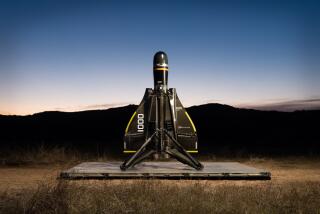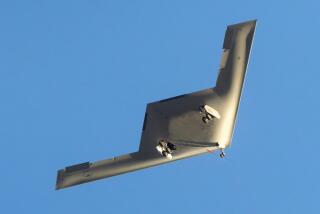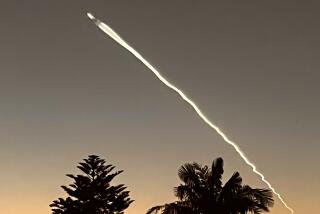Navy catapults experimental bat-winged drone into flight [Video]
For the first time, the U.S. Navy has catapulted the bat-winged X-47B drone into flight.
The test conducted Thursday wasn’t at sea, but rather at a shore-based catapult facility at Naval Air Station Patuxent River, Md.
It marks the first of several shore-based catapult-to-flight tests that will be performed before the sleek drone, called the X-47B, is launched from a ship.
The X-47B, built by Northrop Grumman Corp., is designed to perform one of aviation’s most difficult maneuvers: land on the deck of an aircraft carrier. What’s even more remarkable is that it will do that not only without a pilot in the cockpit, but without a pilot at all.
“Today’s successful launch is another critical milestone in the carrier-suitability testing phase” of the program, Mike Mackey, Northrop Grumman’s X-47B program director, said in a statement.
After the catapult launch, the X-47B conducted a test flight over Chesapeake Bay, which included several maneuvers designed to simulate tasks that the aircraft will have to perform when it lands on a ship, the company said.
Over the next few weeks, the Navy expects to conduct several shore-based catapults at Patuxent River. On Monday, an X-47B was hoisted aboard the Harry S. Truman aircraft carrier at Naval Air Station, Norfolk, Va., to begin a series of deck handling trials.
The Navy has said it expects the X-47B to first land on a carrier by 2013, relying on pinpoint GPS coordinates and advanced avionics. The carrier’s computers digitally transmit the carrier’s speed, cross-winds and other data to the drone as it approaches from miles away.
With the drone’s ability to be flown autonomously by an onboard computer, the X-47B marks a paradigm shift in warfare.
Currently, combat drones are controlled remotely by a human pilot. The X-47B could carry out a combat mission controlled entirely by a computer. A human pilot designs a flight path and sends it on its way and a computer program guides it from a ship to target and back.
The X-47B is designed to fly farther and stay in the air longer than existing aircraft because it does not depend on a human pilot’s endurance. Navy fighter pilots may fly missions that last up to 10 hours. Current drones can fly for three times that long.
There were two X-47Bs built under a $635.8-million contract awarded by the Navy in 2007. They were constructed behind barbed-wire fences and double security doors at Northrop Grumman Corp.‘s expansive facility in Palmdale.
The X-47B is an experimental jet — that’s what the X stands for — and is designed to demonstrate new technology, such as automated takeoffs, landings and refueling. The drone also has a fully capable weapons bay with a payload capacity of 4,500 pounds, but the Navy said it has no plans to arm it.
ALSO:
New Camaros tear down runway to help U-2 spy planes land
New bat-winged drone hoisted atop aircraft carrier for testing
Women are increasingly ascending to top posts at aerospace firms
More to Read
Inside the business of entertainment
The Wide Shot brings you news, analysis and insights on everything from streaming wars to production — and what it all means for the future.
You may occasionally receive promotional content from the Los Angeles Times.











